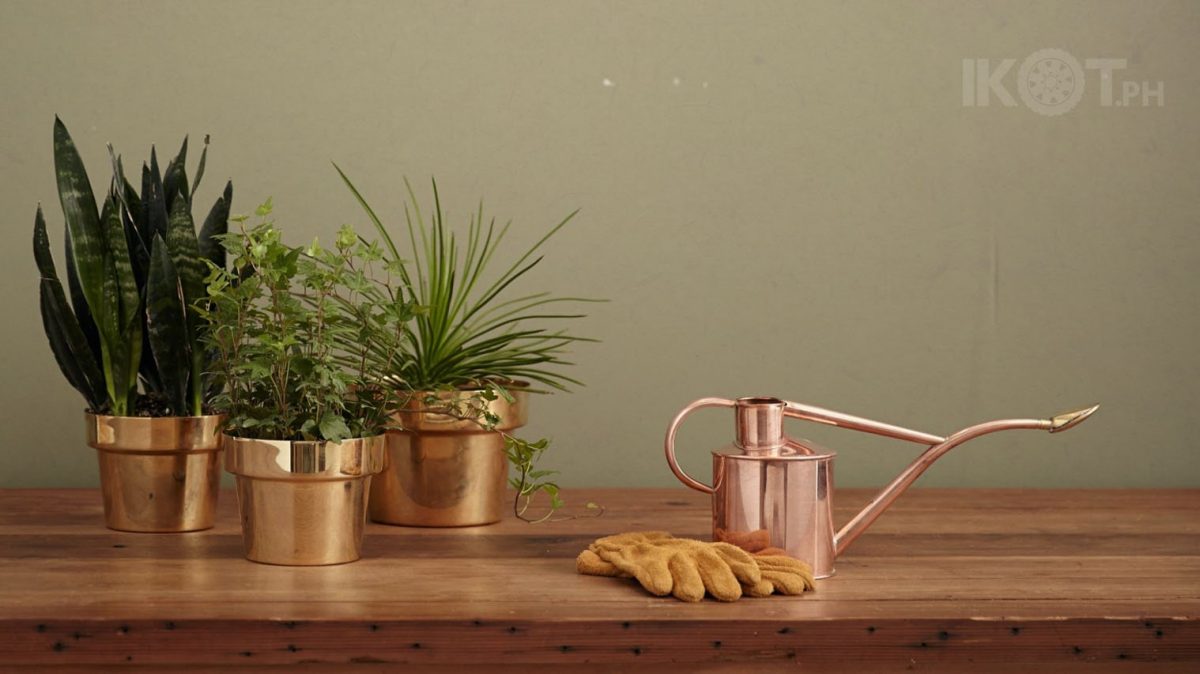If you live in a city, sometimes nature is hard to get by. A lot of areas are surrounded only by buildings and everything concrete.
Being close to nature has been proven to keep you happier and healthier, with both psychological and physical benefits. There are plenty of plant options out there, and for beginners to gardening, the array of choices can be intimidating.
To make this easier, we’ve listed some options below that are beginner-friendly to explore.
SUCCULENTS AND CACTI
Succulents are one of the most common starter plants out there. They come in different types, sizes, color and appearance. Because succulents are initially desert plants, the general rule with succulents is that you shouldn’t water them too often and make sure that the pot and the soil have good drainage. This means that the soil should be able to have enough space for the water to pass through it easily and avoid keeping the roots of the plant wet for an extended period of time. Succulent roots rot easily when kept damp. To avoid this, a good mixture is potting soil with sand, or pumice. Coco peat is also a good option for succulent types that like more water. Succulents also love the sun, so make sure that your plants get a lot of sunlight. Keep them in windows with sunlight going in closer to sunrise, if possible, so the exposure wouldn’t be too hot. You will need to water them only once a week or every two weeks. Don’t worry about growth right away, because succulents are slow growers and they don’t really grow big.
AIR PLANTS
Air plants are sturdy plants that don’t require soil. Because they don’t need soil, these plants have cases or vases that you can get creative with. Same with succulents, they require bright light and good water. Good water means filtered water or rain water. You can also use distilled water, but you’ll need to add fertilizer, so the water doesn’t extract nutrients from the plant. For air plants, the leaves absorb the water. To water these plants, you can submerge or dunk the plant in water once or twice a week. You will need to take them out upside down and give it a very gentle ring so there’s not too much water retained in the center. Wood displays, or glass make really good displays for air plants! Just make sure you don’t use anything that can hold water.
POTHOS VINES
If you live in a space that doesn’t have a lot of sunlight, the Pothos might be a better option for you. It’s a common houseplant and is fairly simple to take care of. It’s a hardy plant that has become an invasive plant for a lot of tropical countries. It requires only medium light and needs nutrient-rich soil that drains well. Since the pothos is a type of vine, you can let it grow trailing down or climbing up, depending on the overall appearance you’re going for.
LUCKY BAMBOO PLANT
The Lucky Bamboo is not actually a bamboo plant. It’s a type of Dracaena that resembles bamboo. This is a pretty common plant and it’s really easy to take care of. You’ll need to water these plants daily as they can live in really moist soil with good drainage or keep them in water. You have to pay attention to the color of the stems and the leaves. If you notice that the stem or leaves are turning yellow, change their vessel and water. Some Lucky Bamboos have been artificially grown to have a spiral form, but the care is still the same. They don’t require a lot of sunlight and will prefer to be indoors but in a well-lit room.
These are just some of the plants that are known to be hardy and easy to take care of. There are a lot of resources online specific to different types of plants. If you’re unsure of the specific name of your plant, you can always ask the seller about the name and maybe some tips on how to take care of them better. If you have pets, or if you or any of your household members have allergies, you also need to take those into consideration before buying! Hope this helps, and happy growing!


